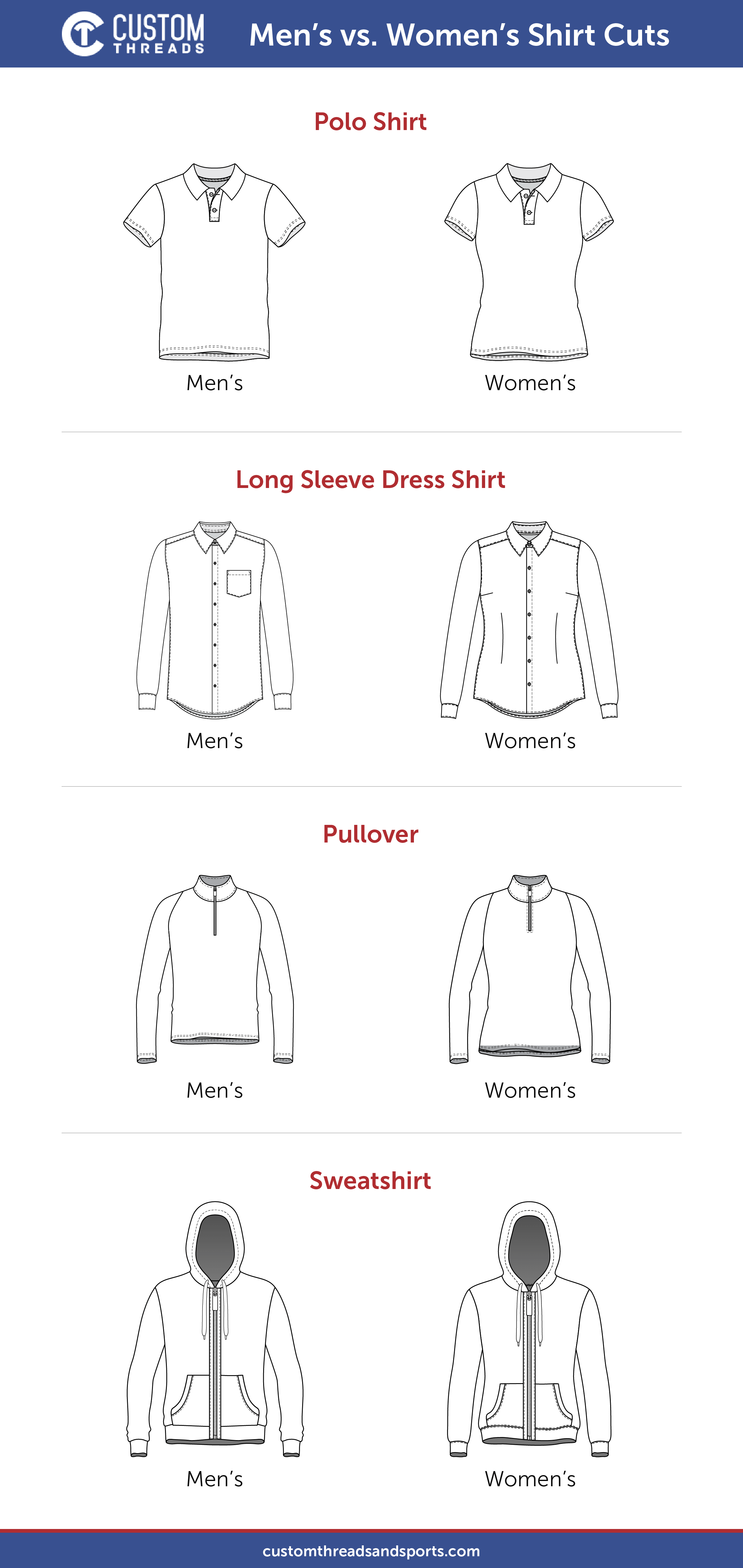If you’re deciding to set up a custom corporate apparel program, you may wonder if it’s really worth offering both custom women’s clothing and men’s clothing. However, the key to any apparel program’s success is making sure that end users can select apparel they find comfortable and flattering. People are more likely to wear your custom attire when it is available in their preferred fit. This blog will explore the difference between men’s and women’s shirts and why they’re a smarter choice than opting for unisex apparel.
What is a Women’s Cut Shirt?
If you’ve ever wondered exactly what is a women’s cut shirt, the answer lies in its tailoring. Typically, the seam of a women’s shirt tapers in towards the waist and then expands out again towards the garment’s bottom hem.
Another key difference between men’s and women’s shirts is the sleeves. Women’s apparel usually has a tighter fitting sleeve that hugs the wearer’s arm closely. Plus, if the garment is short-sleeved, the sleeve length will only be a few inches from the underarm seam.
Another key aspect of the tailoring is that the shoulders usually have a narrower cut and there are a lot more neckline options to choose from compared to men’s or unisex apparel. Some of the most common necklines you’ll see include scoop, square, round, cowl, turtleneck, or v-neck.
If you’re wondering which style will look best when paired with your logo, it’s helpful to browse examples of different custom women’s clothing. From there, you can get an idea of what styles of women’s apparel will best match the preferences of your stakeholders and also best represent your branding guidelines.
What is a Men’s Cut Shirt?
Men’s apparel offers a less fitted option for the people ordering from your custom apparel program. Opposite to the curved seam found on women’s shirts, men’s cut has a straight seam from the underarm to the hem.
Men’s cut apparel is also designed with wider shoulders and loose-fitting sleeves. If the garment is short-sleeved, the sleeve length falls around mid-arm, close to the elbow. While there is some overlap with types of necklines found in women’s apparel, men’s cut shirts have far fewer options. The most common necklines include crew, scoop, or v-neck styles.
Again, it’s easier to select the various shirt styles you want to offer by looking at different examples of custom men’s shirts. Your custom apparel partner can also provide advice on which styles will complement the design and type of apparel program you have in mind.
Is There A Difference Between Unisex and Women’s Shirts?
The fit of a unisex versus a women’s shirt is very different. However, it’s also a common misconception that men’s cut is the same as a unisex cut. While the cut is similar, it’s not the same.
Like the men’s cut, unisex shirts have a straight seam down the sides. Plus, the sleeves tend to be looser and if it’s a short-sleeved garment, they’re longer. However, the sizing of unisex can run a bit smaller than men’s sizing, which is why people who prefer men’s fit possibly have to order up a size for unisex apparel.
This is where the problem with offering only unisex apparel starts. It’s easy to assume it’s clothing that will fit everyone. However, your program stakeholders that want fitted clothing will not be happy with the straight, loose cut. And stakeholders who prefer men’s cut clothing are left guessing how their regular shirt size translates into the unisex sizes.
As a result, many of the people ordering your apparel may end up with clothing that doesn’t fit properly. In turn, this may mean the item gets stored away for good or donated. When you choose to work with a custom apparel partner that offers both men’s-and women’s-fit clothing, you're ensuring that your stakeholders are satisfied and enjoy wearing their new clothing.




